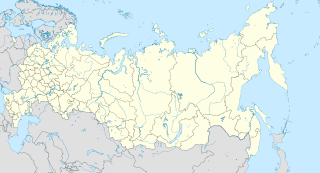
Bauxite is a sedimentary rock with a relatively high aluminium content. It is the world's main source of aluminium. Bauxite consists mostly of the aluminium minerals gibbsite (Al(OH)3), boehmite (γ-AlO(OH)) and diaspore (α-AlO(OH)), mixed with the two iron oxides goethite and haematite, the aluminium clay mineral kaolinite and small amounts of anatase (TiO2) and ilmenite (FeTiO3 or FeO.TiO2).
Mining in Afghanistan is controlled by the Ministry of Mines and Petroleum, which is headquartered in Kabul with regional offices in other parts of the country. Afghanistan has over 1400 mineral fields, containing barite, chromite, coal, copper, gold, iron ore, lead, natural gas, petroleum, precious and semi-precious stones, salt, sulfur, talc, and zinc, among many other minerals. Gemstones include high-quality emerald, lapis lazuli, red garnet and ruby. According to a joint study by The Pentagon and the United States Geological Survey, Afghanistan has an estimated US$3 trillion of untapped minerals.

The mineral industry is one of the main sectors of the Armenian economy and in 2017 accounted for 30.1% of its exports.
The mineral industry of Russia is one of the world's leading mineral industries and accounts for a large percentage of the Commonwealth of Independent States' production of a range of mineral products, including metals, industrial minerals, and mineral fuels. In 2005, Russia ranked among the leading world producers or was a significant producer of a vast range of mineral commodities, including aluminum, arsenic, cement, copper, magnesium compounds and metals, nitrogen, palladium, silicon, nickel and vanadium.

The Kholodninsky mine is one of the largest lead and zinc mines in Russia. The mine is located in south-eastern Russia in Buryatia. The mine has reserves amounting to 519 million tonnes of ore grading 0.65% lead and 3.99% zinc thus resulting 3.37 million tonnes of lead and 21.2 million tonnes of zinc.

The Kostomuksha mine is a large iron mine located in north-western Russia in the Republic of Karelia. Kostomuksha represents one of the largest iron ore reserves in Russia and in the world having estimated reserves of 10 billion tonnes of ore grading 45% iron metal.

The Bugdainskoe mine is a large molybdenum mine located in the south of Russia in Alexandrovo-Zavodsky District, Zabaykalsky Krai. Bugdainskoe represents one of the largest molybdenum reserve in Russia and in the world having estimated reserves of 813 million tonnes of ore grading 0.08% molybdenum, 0.35million oz of gold and 6.2 million oz of silver.

The Sibaysky mine is a large copper mine located in the south Russia in Baymaksky District, Bashkortostan . Sibaysky represents one of the largest copper reserve in Russia and in the world having estimated reserves of 1.48 billion tonnes of ore grading 0.91% copper.

The Uchalinsky mine is a large copper mine located in Russia about 75 km northwest of Yekaterinburg, in Sverdlovsk Oblast. Uchalinsky represents one of the largest copper reserve in Russia and in the world having estimated reserves of 1.94 billion tonnes of ore grading 1.05% copper.

The Tarynnakh mine is a large iron mine located in eastern Russia in Olyokminsky District, Sakha Republic . Tarynnakh represents one of the largest iron ore reserves in Russia and in the world having estimated reserves of 2 billion tonnes of ore grading 28.1% iron metal.
The Olimpiyskoye mine is a large iron mine located in eastern Russia in the Sakha Republic. Olimpiyskoye represents one of the largest iron ore reserves in Russia and in the world having estimated reserves of 900 million tonnes of ore grading 28% iron metal.
The Toyozhnoye mine is a large iron mine located in eastern Russia in the Sakha Republic. Toyozhnoye represents one of the largest iron ore reserves in Russia and in the world having estimated reserves of 1.2 billion tonnes of ore grading 39.8% iron metal.

The Algama mine is a large zirconium mine located in Russian Far East in Ayano-Maysky District of Khabarovsk Krai. Algama represents one of the largest zirconium reserves in Russia having estimated reserves of 93.7 million tonnes of ore grading 4.62% zirconium metal. It is located at the southeast edge of the Stanovoy block of the North Asian Craton.

The Sheregesh mine is a large iron mine located in Tashtagolsky District, Kemerovo Oblast, Russia . Sheregesh represents one of the largest iron ore reserves in Russia and in the world having estimated reserves of 184.7 million tonnes of ore grading 35.8% iron metal.
The Belokitatskoye mine is a large iron mine located in eastern Russia in the Sakha Republic. Belokitatskoye represents one of the largest iron ore reserves in Russia and in the world having estimated reserves of 200 million tonnes of ore grading 88.6% iron metal.
The Abakanskoye mine is a large iron mine located in eastern Russia in the Sakha Republic. Abakanskoye represents one of the largest iron ore reserves in Russia and in the world having estimated reserves of 172.5 million tonnes of ore grading 38% iron metal.
The Yuzhno Khingan mine is a large iron mine located in eastern Russia in the Sakha Republic. Yuzhno Khingan represents one of the largest iron ore reserves in Russia and in the world having estimated reserves of 3 billion tonnes of ore grading 38% iron metal.

The Teiskoye mine is a large iron mine located in eastern Russia in Askizsky District, Khakassia. Teiskoye represents one of the largest iron ore reserves in Russia and in the world, having estimated reserves of 136.4 million tonnes of ore grading 29.9% iron metal.

The Korbalihinskoye mine is one of the largest lead mines in Russia, located in Zmeinogorsky District, Altai Krai. The mine is located in southern Russia in Novosibirsk Oblast. The mine has reserves amounting to 24.5 million tonnes of ore grading 2.01% lead, 9.8% zinc and 43.5 million oz of silver.
The Kharlovskoye mine is a large iron mine located in eastern Russia in the Sakha Republic. Kharlovskoye represents one of the largest iron ore reserves in Russia and in the world having estimated reserves of 4 billion tonnes of ore grading 15.3% iron metal.





